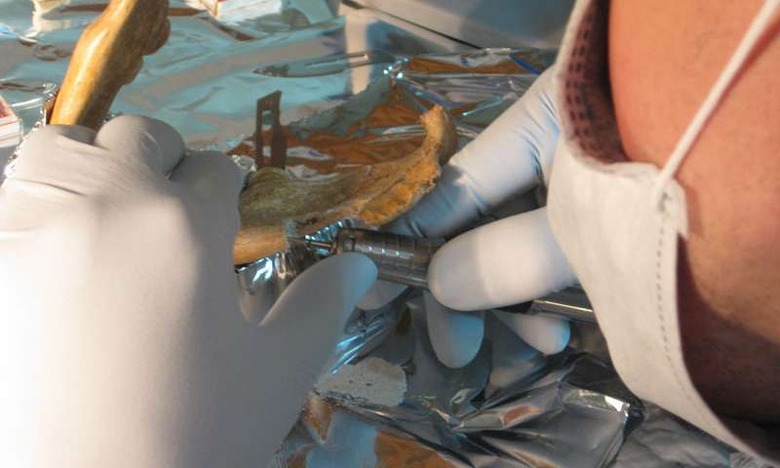Neanderthals may be more related to us than we realize
Today a study headed by Svante Pääbo has been published with information about a new Neanderthal ancestor connection. An early "modern human" was found in Peştera cu Oase, Romania. This Oase individual's genome was sequenced and found to be between 6 and 9% derived from neanderthals. This is a higher percentage neanderthal than any other modern human sequenced thus far. In our entire history of studying modern humans, we've never seen one with so much neanderthal inside. While this doesn't mean we're necessarily a whole lot more neanderthal than we thought, it changes our perception on when neanderthals died out entirely.
Of course the question isn't just when neanderthals died, but whether or not they were just absorbed. That is to say that through breeding, the "neanderthal" simply mixed up with modern humans, and what we've got left we still call human. This one skeleton gives clues to the possibilities, but does not give one definitive answer to the question of what happened to neanderthals in the end.
The end of the neanderthal in Europe, according to Pääbo and crew, was thought to have been approximately 39,000–41,000 years ago. This skeleton provides DNA that's between 37,000–42,000 years old.
This DNA shows 6-9% neanderthal, suggesting that this Oase skeleton had a neanderthal ancestor "as recently as four to six generations back."

ABOVE: Researchers use 35 milligrams of bone powder from the jawbone of this Oase individual for this study. Credit: MPI f. Evolutionary Anthropology/ Paabo
While this jawbone was found back in 2002 in a cave in Oase, it remained unstudied due to an inability to successfully extract DNA. Recent technological advances have allowed the DNA to be extracted, and here we are today, full of new information.
While that's quite a ways for one of us here in the present, these early "modern humans" didn't live nearly so long as we do today. Four to six generations could have been as few as a couple hundred years of time.
Unfortunate for this Oase, his or her line didn't contribute greatly to the greater human population in Europe from his or her point forward. According to Pääbo and crew, "the Oase individual does not share more alleles with later Europeans than with East Asians, suggesting that the Oase population did not contribute substantially to later humans in Europe."
So while this study does show that modern humans were breeding with neanderthals more recently than we'd previously thought, their offspring didn't necessarily have much good luck in the bedroom.
You can get more information on this subject in the paper "An early modern human from Romania with a recent Neanderthal ancestor" in the scientific journal Nature; 22 June, 2015. DOI: 10.1038/nature14558
This paper was authored by Qiaomei Fu, Mateja Hajdinjak, Oana Teodora Moldovan, Silviu Constantin, Swapan Mallick, Pontus Skoglund, Nick Patterson, Nadin Rohland, Iosif Lazaridis, Birgit Nickel, Bence Viola, Kay Prüfer, Matthias Meyer, Janet Kelso, David Reich, and Svante Pääbo.
